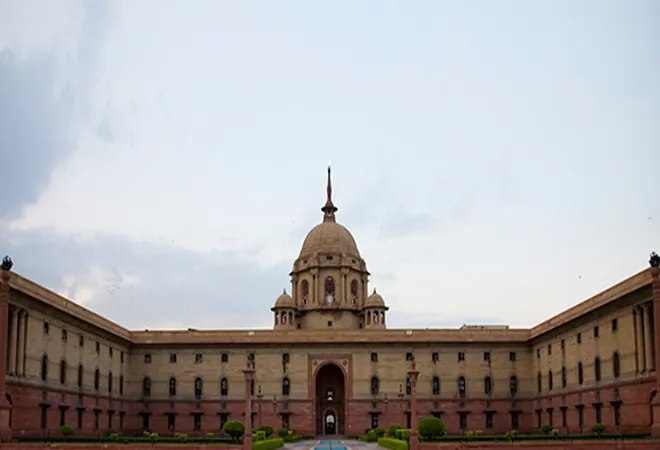
As India re-imagines its neighbourhood, cross-border connectivity through subregions is playing a critical role. The idea of re-integrating its neighbourhood through a subregional approach began to emerge in the late 1990s, but it was only in the mid-2000s that a sustained push for subregional connectivity started to take concrete shape. India’s geographic location and size makes it a natural connector for its immediate neighbours and beyond.
Delhi is aware of the critical role it has in enhancing connectivity in its neighbourhood, both in land and at sea. Having failed to push regional connectivity initiatives under the South Asia Association for Regional Cooperation (SAARC) framework, India’s shifted the focus on subregional connectivity. Connectivity projects were initiated at bilateral, trilateral and subregional levels to expand cross-border transport infrastructure.
The efforts have seen some results after the operationalisation of the “Neighbourhood First” policy and the “Act East” policy launched under the Modi government that has renewed the focus on strengthening connectivity and reviving subregional initiatives in the context of the dismal prospects of regional economic cooperation within the SAARC framework and against the backdrop of China’s ambitious “Belt and Road Initiative” (BRI) that has attracted several countries in India’s vicinity.
At the time of approval the signing of the four-nation BBIN (Bangladesh, Bhutan, India and Nepal) subregional Motor Vehicle Agreement (MVA) in 2015, the logic that guided Delhi was that the SAARC-MVA “could not be signed due to reservations of Pakistan … it was considered appropriated that a sub-regional … be pursued.”
Delhi has envisioned various subregions in and around the subcontinent. Re-integrating the subcontinent by re-discovering the old as well as building new land, sea, and riverine corridors has been a key focus. Recent years has seen various connectivity projects in the eastern subcontinent at the bilateral, trilateral and the subregional BBIN framework intended to achieve the objectives of the new approach and bringing together the Bay of Bengal and the Himalayan subregions.
This bottom-up approach has given India the way forward in building trans-border connectivity and helps it circumvent political challenges. As India pursues a more robust “Act East” policy, Delhi has been pushing its connectivity projects in two subregional groupings — the Bay of Bengal Initiative for Multi-Sectoral Technical and Economic Cooperation (BIMSTEC) or the Mekong–Ganga Cooperation (MGC) to further integrate with Southeast Asia.
The India-Myanmar-Thailand Trilateral Highway project and the sea-river-land Kaladan Multi-Modal Transit Transport Project that aims to develop transport infrastructure in western Myanmar and Northeastern India forms the key connectivity projects in linking India with that Mekong subregion and have seen notable progress in recent years with greater involvement from Delhi.
For a long time, India has faced difficulty in initiating cross-border connectivity through its western border due to continued tensions with neighbouring Pakistan. This constrained India in enhancing connectivity with Afghanistan and Central Asia by land via Pakistan. Delhi has re-imagined the geography of its western neighbours through the wider Arabian subregion to connect with the Persian Gulf, Afghanistan as well as Central Asia, allowing it to benefit from this alternative route without the need to go through Pakistan.
The imperative to find an alternative route has also been necessitated because of China’s increasing involving in the development of mega infrastructure projects such as the Gwadar port in southern Pakistan and other huge network of road and rail projects in Central Asia.
Recognising that the potential of the Arabian subregion remains untapped in linking the nations, India has envisaged the maritime route through the Arabian Sea to reach out to Iran and through it to Afghanistan and Central Asia. The Chabahar agreement between Afghanistan, India, and Iran fulfills this idea of building a subregion around the Arabian sea. This initiative opens up opportunities for India to play a role in the emerging geopolitics of the region.
As part of the ongoing policy changes and renewed focused on subregional connectivity initiatives, India would need to take some of the subregional connectivity projects and plans beyond mere mentioning in joint statements. This includes the Delhi–Hanoi Rail Link, the India–Mekong Economic Corridor and the BCIM-Economic Corridor (EC).
After China launched the BRI initiative in 2013 and announced the China–Pakistan Economic Corridor (CPEC), New Delhi has expressed its opposition on the ground of territorial sovereignty as the CPEC passes through the disputed territory claimed by both India. Since then, New Delhi has been going slow on the BCIM-EC.
The progress on BCIM-EC is unlikely in the near future even as China as dropped the BCIM project out of the BRI projects’ list because there is no sign India would change its position on the BRI initiative over its principled stance on sovereignty. Moreover, with the strategic implications of China’s BRI looming large on the neighbourhood, Delhi may want to distance itself from any project linked to the BRI in any form.
Bridging the missing links in and around India will integrate Iran to the west and Vietnam to the east through both land and sea. Better connectivity in India’s subregions will support the idea of wider integration between South Asia, Southeast Asia, West Asia, Central Asia, eastern Africa, and the Indian Ocean where Delhi could take the leading role.
There may be an element of competition in Delhi’s attempts to build connectivity. As a rising power, India has its responsibilities both at the regional and global levels. Providing alternative options in the development of its neighbouring countries is an extension of sharing its propriety as well as ensuring that building infrastructure is based on respects for the sovereignty of every nation, big or small.
Delhi’s inability to fully integrate itself with the subregions adversely affects its image-building efforts as a regional power. As India renews its interest to push for subregional connectivity, some of the structural challenges that have long marred effective implementation of strategic infrastructure projects both within as well as in the neighbourhood are being addressed. The challenge for New Delhi is one of sustaining the momentum generated by its subregional initiatives.
This is an extract from Harsh V Pant and K. Yhome, “India’s subregional connectivity initiatives: re-imagining the neighbourhood,” India Review, Vol. 19, No 1 (January-March 2020), pp. 33-51.
The views expressed above belong to the author(s). ORF research and analyses now available on Telegram! Click here to access our curated content — blogs, longforms and interviews.




 PREV
PREV



